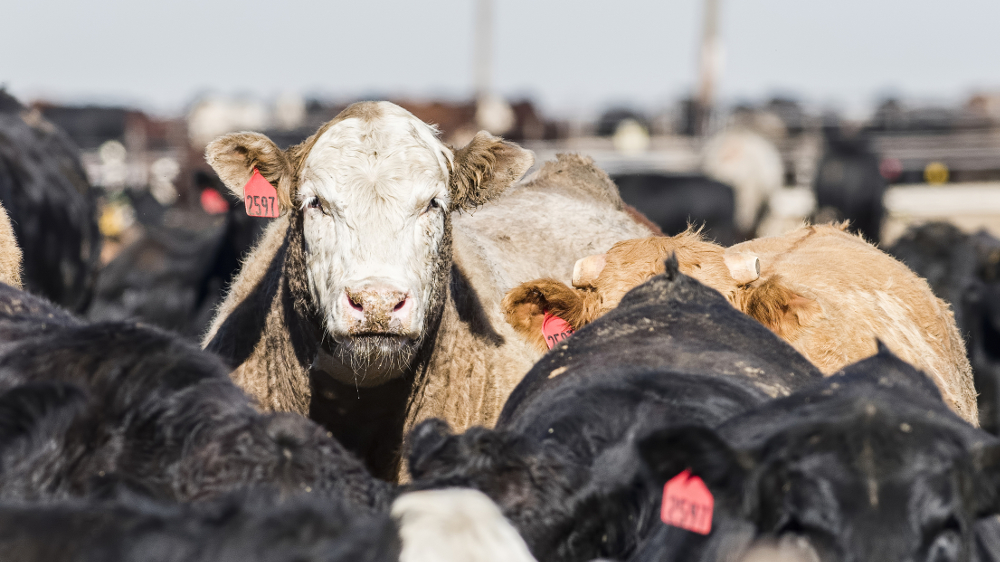Contributed
Editor’s note: One of our regular contributors, Carl Custer, has been closely watching the investigations into E. coli O157:H7 outbreaks associated with romaine lettuce in the past year. Here he discusses some of the research he has been reviewing in recent days on related topics.
An animal entering a feed lot or other CAFO is similar to your child entering kindergarten. Your child will pick up every cough, cold, or disease — including head lice — prevalent in that facility. For CAFOs, there is an economic and regulatory incentive to prevent and correct any animal diseases and prophylactic antibiotics are frequently administered.
However, for human pathogens, there is little to no incentive for interventions. Thus, these concentrated animal feeding operations (CAFOs) become centers for concentrating human pathogens.
Carlson et al. (1) reported, “Our data contribute to the growing body of evidence indicating that E. coli O157:H7 persists in cattle populations.”
They averred in the conclusion, “Finally, our findings provide evidence that cattle may be more likely to be colonized by E. coli O157:H7 molecular subtypes that demonstrate accentuated human-pathogenic potential, as shown by the enhanced ability of persistent strains to adhere to human intestinal epithelial cells. Additionally, it stands to reason that there is an increased likelihood that these E. coli O157:H7 subtypes are transferred through the production continuum and subsequently into the human population because of their increased prevalence in feedlot cattle. Our results highlight the importance of preharvest food safety interventions to reduce the load of E. coli O157:H7 that enters the human food supply and support the conclusion that such efforts should be targeted at strains that persist in cattle populations which seem to represent the greatest risk to human health.”
Supporting Carlson, Worley et al.(18) reported in 2017, “Within farms, generally one or a few lineages were found, even when the rate of isolation was high. On farms with high isolation rates, a single clonal lineage accounted for most of the isolates.”
Pianciola and Rivas, in a 2018 review (12) comparing the genes of E. coli O157 strains in humans and cattle wrote, “The characteristics of the strains that cause disease in humans reflect the predominant genotypes in cattle in each of the countries analyzed.”
These three papers show that CAFOs for cattle are reservoirs for human pathogens, especially Shiga Toxin positive Escherichia coli (STEC).
Carlson, Brandon A., Kendra K. Nightingale, Gary L. Mason, John R. Ruby, W. Travis Choat, Guy H. Loneragan, Gary C. Smith, John N. Sofos, Keith E. Belk. 2009. “Escherichia coli O157:H7 Strains That Persist in Feedlot Cattle Are Genetically Related and Demonstrate an Enhanced Ability To Adhere to Intestinal Epithelial Cells” Applied and Environmental Microbiology. 75: 5927–5937 doi:10.1128/AEM.00972-09
Pianciola, Luis, and Marta Rivas. 2018. “Genotypic Features of Clinical and Bovine Escherichia coli O157 Strains Isolated in Countries with Different Associated-Disease Incidences, Microorganisms” 10.3390/microorganisms6020036, 6, 2, (36).
Worley JN, Flores KA, Yang X, Chase JA, Cao G, Tang S, Meng J, Atwill ER. 2017. “Prevalence and genomic characterization of Escherichia coli O157:H7 in cow-calf herds throughout California” Appl Environ Microbiol 83:00734-17. https://doi.org/10.1128/AEM.00734-17.
(To sign up for a free subscription to Food Safety News, click here.)

